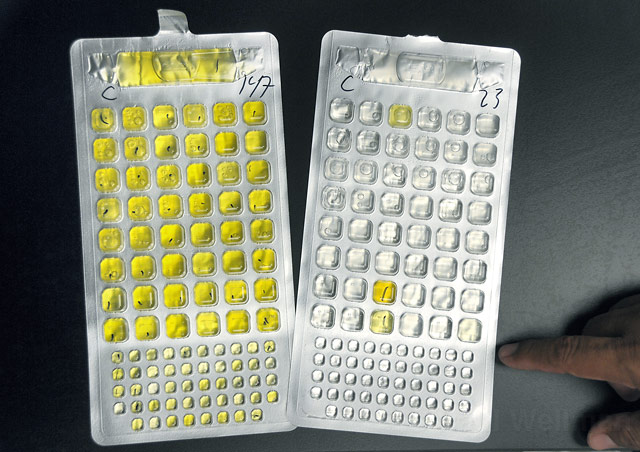The Mystery of Arroyo Burro
Summer Sees Beach Plagued by Bad Water

At this point, at least around these parts, the knowledge is fairly universal: When it rains, the lovely ocean to our south can get nasty with all sorts of bacteria, fertilizer runoff, sewage, and assorted other potentially harmful pollutants. Less advertised, and decidedly less understood, however, is when similar bouts of water quality trouble occur along popular Santa Barbara beaches during the rainless summer months when creeks run dry and the downstream flow goes on hold.
Such was the case this summer as sandy stretches from Gaviota to Carpinteria frequently saw nearby waters exceed state standardized levels for fecal coliform, total coliform, and enterococcus during routine weekly testing. And while a certain degree of this occurs every summer, the results for the hugely popular, county-run Arroyo Burro Beach (a k a Hendry’s Beach) have been alarming, to say the least. “Arroyo Burro has practically failed every single week this summer,” summed up the county’s point man for water quality testing, Willie Brummett, early last week as the beach failed to meet basic health standards for the 10th time in the past 11 weeks.
It is important to note that, in and of itself, indicator bacteria tests such as those used in water quality testing do not necessarily mean that nefarious pathogens are out to get you while playing in the sea, but rather that conditions exist that may be conducive to such pollutants being present. Nevertheless, the less-than-stellar summer track record, which often included fecal and total coliform as well as enterococcus results more than four times higher than the state standards for the well-traveled Hope Ranch beach, is certainly reason for concern. In fact, in its annual summer report card on the health of beaches throughout the West Coast released just last week, the Los Angeles-based water quality watchdog Heal the Bay gave Hendry’s an “F” — the only failing grade out of 20 tested beaches in the county.
The string of bad tests — which never actually necessitated a posted beach closure as that is only reserved for unadulterated raw sewage spills — prompted a circling of the wagons of sorts by both county and city water quality experts nearly two months ago. But still the less-than-ideal test results continue and, more importantly, the reason for them remains a mystery. “When things like this happen, we go into pretty extensive sampling mode to figure out what is going on,” explained Cameron Benson, the city’s Creeks Division manager. “Unfortunately, it really is like searching for a needle in a haystack.” Making matters even more difficult to explain has been the fact that on more than one occasion, the dirty results have come from water samples taken just offshore rather than those taken from the historically sullied estuary (a k a Arroyo Burro Creek) that flows onto the beach just east of the Boathouse Restaurant.
According to Brummett and Benson, the best guess as to who or what is responsible for the excessive results includes full-moon–driven high tides; dog poop on the beach; homeless people making “direct deposits” in the creek; leaky sewage pipes, both private and city-owned (interestingly enough, two sewage sniffing dogs brought out this summer from Michigan by the city did actually locate, among several other areas of concern, a leaky sewage pipe upstream from Hendry’s Beach); dirty gutters; illegal RV dumping; this past winter’s higher-than-average rainfall; and the fact that the aforementioned estuary has remained at least somewhat water-filled all summer (as compared to most summers when it is allowed to go dry).
Stressing the fact that bad indicator bacteria readings “don’t make people sick,” Benson lamented the shortcomings of a water quality test that “isn’t designed to tell you where the pollution is coming from.” For that, the city and the county would need DNA-based source testing, something that is expensive and takes weeks for the results to return, which would render the data useless for public safety purposes. “Unfortunately, with our budget the way it is, we can do the monitoring and that is about it,” said Brummett.



